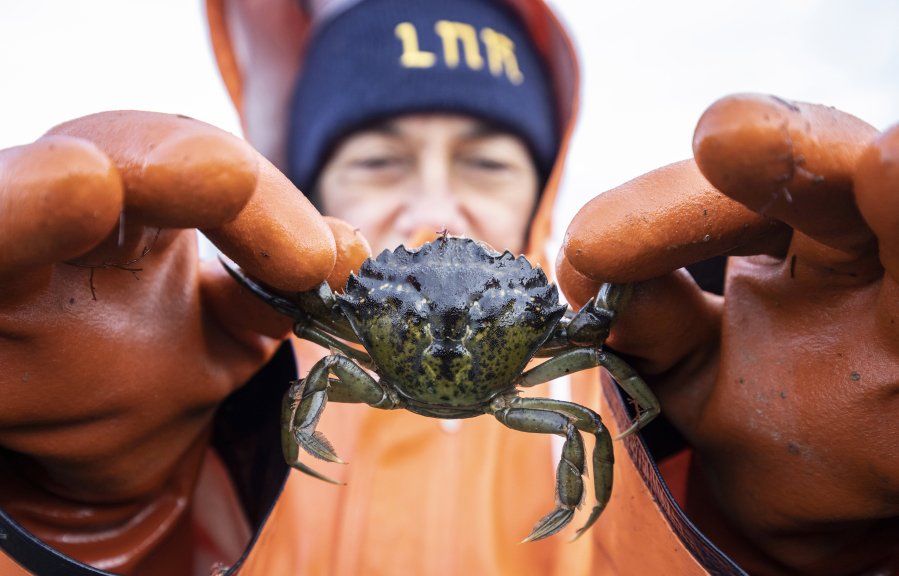SEATTLE (AP) — Agencies, tribes and groups across Washington state are working to limit the growth of European green crab populations. Scientists say the invasive species can consume shellfish and other native marine life, and destroy habitats that much of the food web relies on.
Washington Department of Fish and Wildlife said more than 138,000 crabs have been trapped since the beginning of the year, KING5 reported.
State and federal officials said shellfish growers, tribes and other entities are playing crucial roles in crab removal.
Allen Pleus, European Green Crab Incident Commander for fish and wildlife, said Washington is still early enough in the phases of invasion that it is possible to make a significant dent in populations.
“We have a really unique opportunity to hit these hard and try to manage them,” Pleus said.
The crabs first arrived on the West Coast in 1998, but initial populations appeared to die out, he said. Over the past three to four years, the state has seen a resurgence, mostly on the coast, with Lummi Sea Pond a major area of concern.
In December, the Lummi Nation said it had seen populations there grow from the tens in 2019, to the hundreds in 2020 and thousands in 2021.
The Shoalwater Bay Indian Tribe said it, too, is dealing with a large influx of the crabs and will use some federal funding to trap tens of thousands this year.
“We’re not seeing a let-up on any of the numbers we’re trapping and there’s no population reduction we’ve seen anywhere,” Shoalwater Bay Indian Tribe Director of Natural Resources Larissa Pfleeger-Ritzman said.
WDFW said so far, infestations have been detected in Willapa Bay, Grays Harbor, Makah Bay and Lummi Bay; they remain low across other areas of the Strait of Juan de Fuca, San Juan Islands, Bellingham and Padilla bays.
WDFW said it has not yet confirmed the crabs in the Salish Sea south of northern Hood Canal and Marrowstone Island in Admiralty Inlet.




